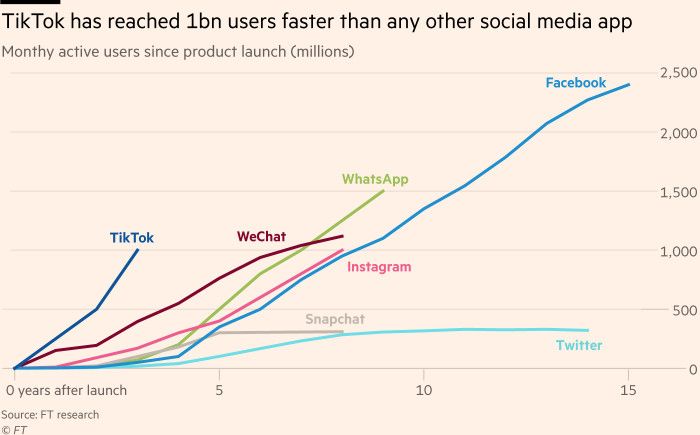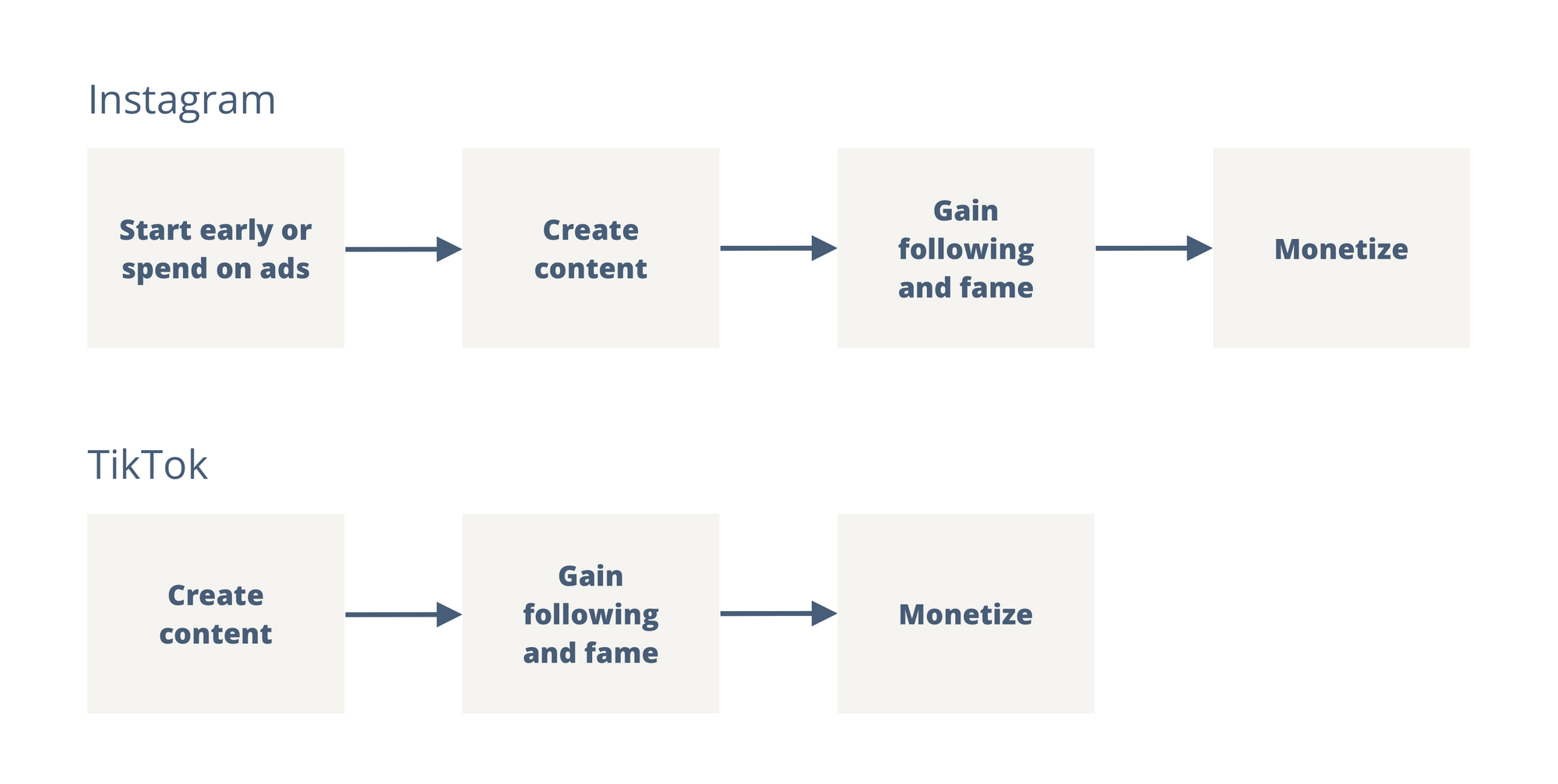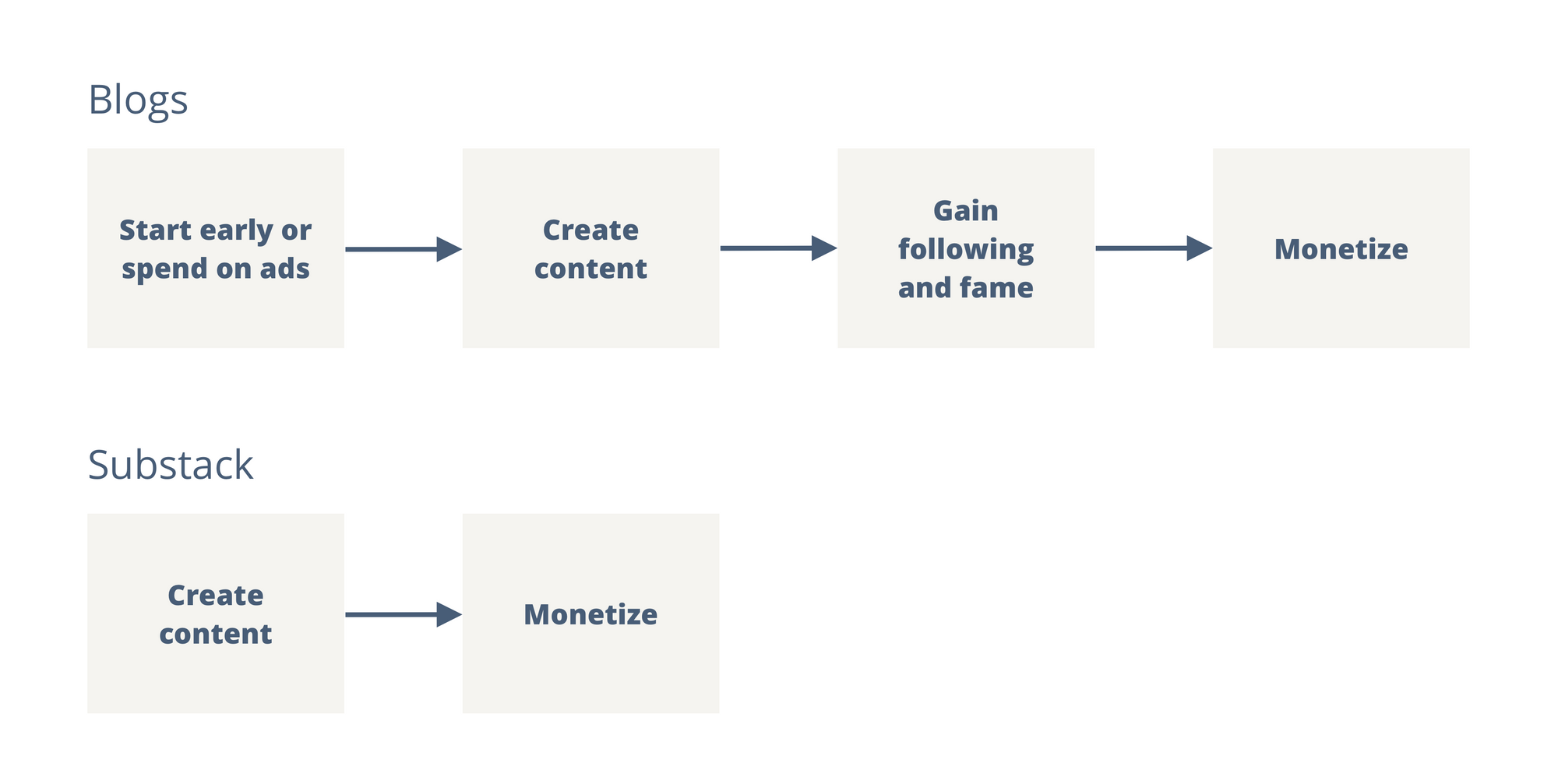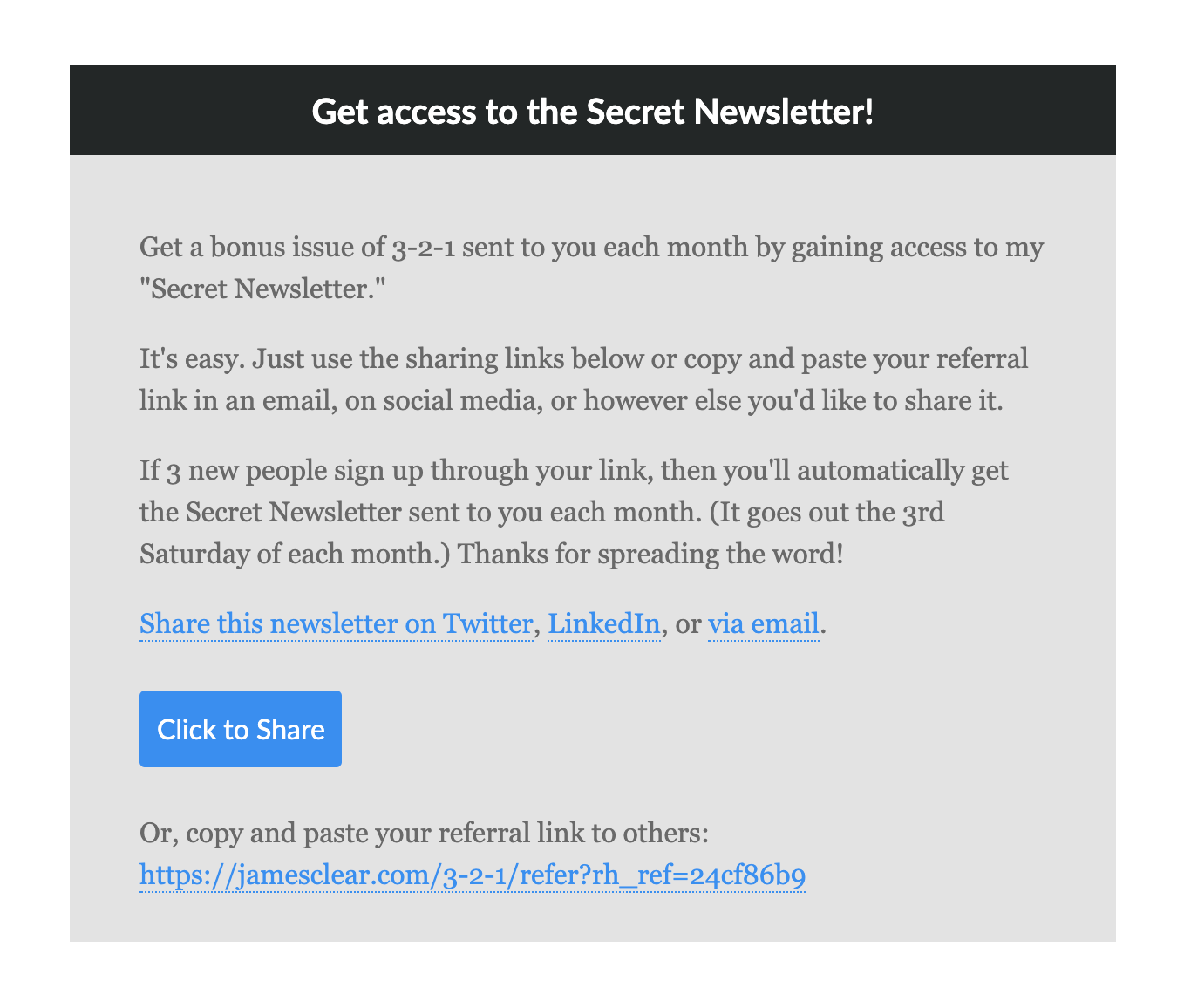Substack Is Doing to Blogs What TikTok Did to Instagram
Alfred Lua / Written on 10 July 2020
Hello there,
This week's subscribers-only content is on how I think about product work. I shared the three ways I have been thinking about product work and how we could ship faster, including lessons from The Goal and The Phoenix Project. This was inspired by a Reforge article, Product Work Beyond Product-Market Fit, which taught me to think beyond just feature work.
What did TikTok do to Instagram?
Given how established Instagram already was, it's amazing how TikTok managed to attract users and grow so quickly. It is the fastest-growing social media platform, taking half the time Instagram took to get to one billion users.
 How did TikTok manage to attract users when many people were already habitually using Instagram?
How did TikTok manage to attract users when many people were already habitually using Instagram?
Alex Zhu, the co-founder of Musical.ly, explained in this video how they grew a huge community from scratch, which was then acquired and merged into TikTok.
He said building a community is similar to running an economy. Instagram is Europe, Musical.ly is America. In Europe, the social class has already stabilized. The average citizen has almost no chance of moving up the social class. Instagram influencers tend to remain as influencers, and it is hard for anyone starting from scratch to build up a following to compete, especially without using ads.
But there is a new piece of land, America, where anyone can become rich. Thanks to its algorithm and focus on getting people to view as many videos as possible in a short period of time, Musical.ly enabled early users without much following to "go viral". Tens to hundreds of followers but millions of views. Upon learning about that, people started to migrate to this new piece of land, Musical.ly, to seek the same opportunity.
But it doesn't end there. There are two other key components:
- The algorithm ensured that new users have an equal chance to gain fame, unlike on Instagram where if you are late to it, it's almost impossible to catch up.
- More importantly, the platform created ways for top users to monetize their fame, such as through virtual gifts. The monetary incentive will entice top users to stay. And top users attract more new users who strive to earn fame and money.
 People who wanted fame left Instagram because they saw few opportunities and took a bet on Musical.ly, and then TikTok. As they "struck gold", others decided to migrate to TikTok, too. The result is the chart we see above.
People who wanted fame left Instagram because they saw few opportunities and took a bet on Musical.ly, and then TikTok. As they "struck gold", others decided to migrate to TikTok, too. The result is the chart we see above.
In just three years, TikTok grew to a billion users.
How does this relate to Substack and blogs?
If you have written a blog or done content marketing, you know it's really hard to compete with the current top blogs. It's not impossible but it'll take a lot more effort now than 10 years ago. Most people already know about the top blogs and would them directly. SEO is also in their favor. For anyone who wants to build up a following with their blog, they have to be prepared to work for a really long time.
The social class has stabilized.
If gaining traffic is hard, monetizing is even harder. The common approach has been putting up display ads (if you have visited a food blog, you'll know how many ads you can fit into a page), getting sponsors, or selling courses and books. But all these require you to have a sizable amount of traffic first. Without the "eyeballs" on your blog, you won't get much from display ads, sponsors won't want to partner with you, and it'll be hard to sell anything.
But there is a new piece of land. Substack.
The social class is, in fact, less relevant here. Substack allows people to skip the fame step altogether and start monetizing immediately. You don't need a massive amount of traffic to make money from ads or sponsorships. You can monetize your content directly.
 Even if there were people who were willing to pay for your content in the past, it wasn't feasible for most. There wasn't an easy way to collect payments from your readers. Substack has made both starting a newsletter and collecting payments much easier. Substack isn't the only tool that can do this now. Ghost has a membership feature (which I'm using); Memberful allows WordPress sites to have memberships; OnlyFans enables creators to provide subscriptions to their social-media-like content.
Even if there were people who were willing to pay for your content in the past, it wasn't feasible for most. There wasn't an easy way to collect payments from your readers. Substack has made both starting a newsletter and collecting payments much easier. Substack isn't the only tool that can do this now. Ghost has a membership feature (which I'm using); Memberful allows WordPress sites to have memberships; OnlyFans enables creators to provide subscriptions to their social-media-like content.
The new technologies in this area have enabled a nobody like me to build this newsletter and get paid by people who are keen to read my essays. I don't have to build up a ton of traffic to get a tiny amount through display ads. I also don't have to spend a lot of time looking for sponsors and get rejected because I don't have sufficient traffic.
I can focus on writing great content—and get paid for it.
My hunch is individuals who ultimately want to monetize their content will move away from ads and adopt the paid content model. The number of people paying for Substack newsletters doubled between 2018 and 2019, from 25,000 to 50,000. And the most popular Substack writers are making hundreds of thousands of dollars a year.
(Edit: The previous version stated "the number of Substack customers", instead of "the number of people paying for Substack newsletters". I misinterpreted what Techcrunch meant by "paying subscribers".)
For people who want to build a following or companies who are doing content marketing, the "traditional" approach of writing a blog with free content will still be their choice. That is perfectly fine.
Growth opportunity for Substack
While Substack solved the monetization problem for writers better than traditional blogs, it would also need to tackle the distribution problem for writers to grow its customer base. It's nice to have a few friends and followers pay for my content but I want to grow my "customer base" much more.
Right now, discovery and distribution aren't great with Substack (or Ghost or Memberful). Substack has a list of top publications on its website, accompanied by a search engine. That is as far as it goes with discovery and distribution. Substack writers would need to rely on their own marketing.
Substack might be able to draw some lessons from Shopify.
Shopify's strategy has been to empower merchants to build their store and brand while Shopify stays in the background. But Shopify is also making marketing easier for merchants. There are integrations that allow Shopify merchants to upload and sell their products on Facebook and Instagram, apps for creating a referral program, and apps for organizing contests and giveaways. This isn't to say Substack should create an app store. But I think it'll be ideal if Substack provides features to enable Substack writers to market their publications themselves.
One of the most powerful ways of growing a publication (or maybe anything) is referral. For example, at Buffer, word-of-mouth has been our main engine of growth. We also see that customers who were referred by a friend or colleague are more active in our product than customers from other acquisition channels. Morning Brew built an audience of 1.5 million subscribers through its referral program. James Clear, the author of jamesclear.com and Atomic Habits: An Easy & Proven Way to Build Good Habits & Break Bad Ones, also uses a referral program to grow his popular 3-2-1 newsletter.
 Substack currently doesn't have a referral program, and third-party programs aren't supported, too.
Substack currently doesn't have a referral program, and third-party programs aren't supported, too.
I understand Substack probably has a ton of feature requests, and it is definitely not easy to just build a referral program. But I believe it is one of the highest leverage projects the team can work on. For Shopify, anything that helps its merchants grow their business has helped Shopify grow. For Substack, anything that helps its writers grow their readership should help Substack grow.
Micro-payments: The future
I have often stumbled upon a paywall and would have happily paid $1 to read the article, even if it might be more economical for me to get a month's subscription. At that moment, I only want to read that article and I'm not sure if or when I'll visit that particular site again. It doesn't make sense to get a month's subscription. If the article I paid a dollar for is great, I might come back again for another article and would still be happy to pay $1 to read it but not get a subscription. But I can't. The only option is usually to get a subscription. I don't want a subscription unless I know I keep coming back to the site for its content.
Right now, most people hit a paywall and bounce. They don't get to see how good the content is and might never return. If they could make micro-payments, they might pay to read the content while the writer would earn a small amount at no marginal cost because the article is already written. Instead of forcing people to commit to a monthly subscription, the writer could allow readers to pay for each read. Such micro-payments are already very common in China, where consumers would pay a few cents for a piece of content.
Most importantly, the content creator remains profitable.
But micro-payments are not feasible when the content creators are charged a variable fee and fixed fee for each payment. Substack, Ghost, and Memberful are powered by Stripe, so every payment has a 3.4 percent plus 50-cent transaction charge. For micro-payments of less than a dollar, the 50-cent charge eats up almost everything, leaving the content creator with barely any amount.
When making micro-payments becomes less costly, I believe more content creators will adopt the pay-per-read model as it becomes more profitable. The platform that can enable them to do that will be the "stickiest".
Will it be Substack who will lead the charge on this?